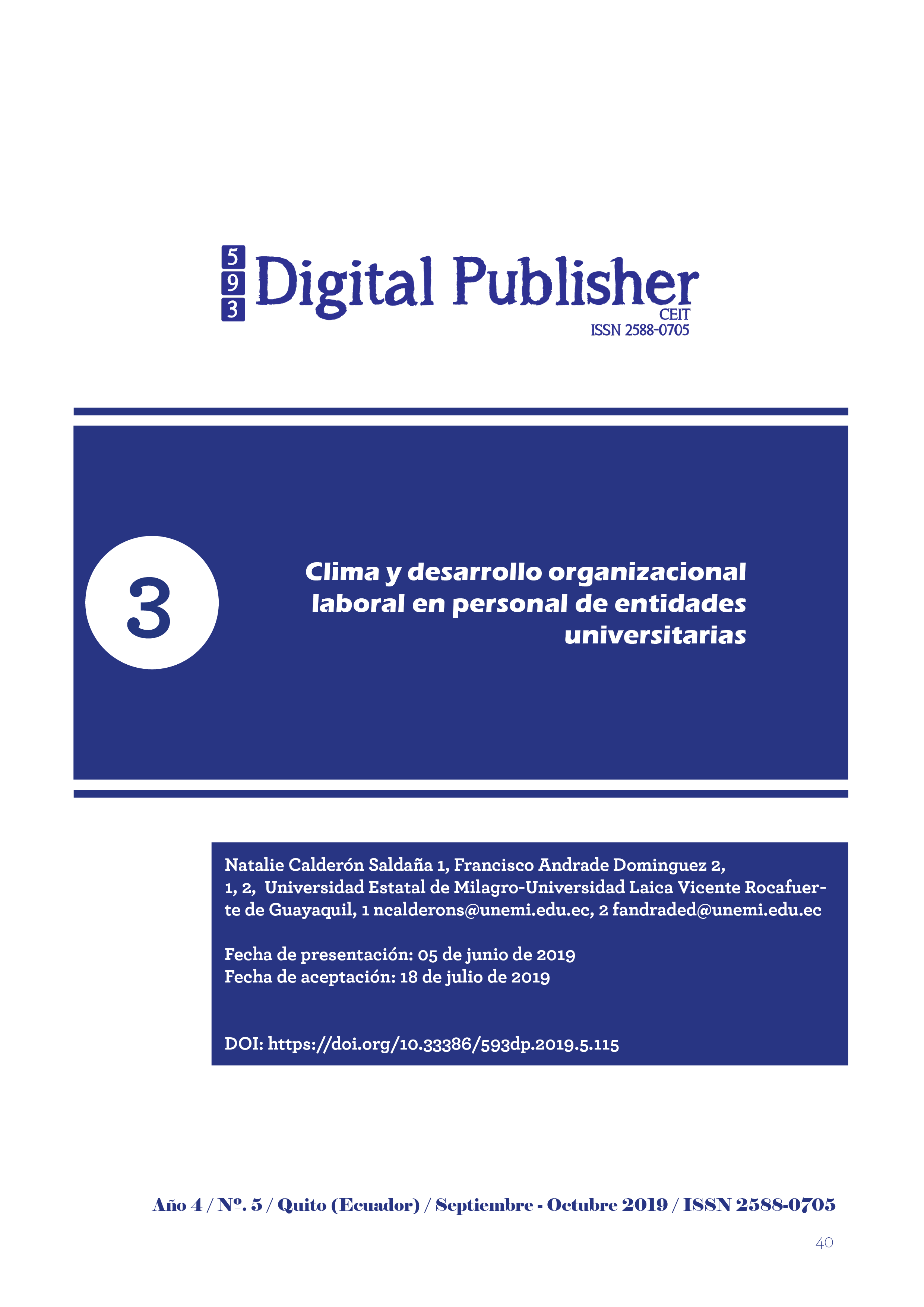Climate and organizational labor development in staff of university entities
Main Article Content
Abstract
As in the private sector, the control of the current state of the labor climate has increased its interest in the public sector, however, its proper implementation in particular may be difficult to achieve. Higher education institutions turn out to be interesting cases of study because of their complex management model in the public context. Based on the context of the two-factor theory of Frederick Herzberg; and a series of related theories on methodological aspects of the motivation and work performance is proceeded to validate the approach of the research hypothesis to a segment of the institutional staff. The methodology applied is of a descriptive, observational, transversal nature; The results obtained through the Spearman coefficient (0.878), determined a high correlation between motivation and job satisfaction. The obtained conclusions; They suggest the need to develop motivation as a basic element when managing human resources
Downloads
Article Details
1. Derechos de autor
Las obras que se publican en 593 Digital Publisher CEIT están sujetas a los siguientes términos:
1.1. 593 Digital Publisher CEIT, conserva los derechos patrimoniales (copyright) de las obras publicadas, favorece y permite la reutilización de las mismas bajo la licencia Licencia Creative Commons 4.0 de Reconocimiento-NoComercial-CompartirIgual 4.0, por lo cual se pueden copiar, usar, difundir, transmitir y exponer públicamente, siempre que:
1.1.a. Se cite la autoría y fuente original de su publicación (revista, editorial, URL).
1.1.b. No se usen para fines comerciales u onerosos.
1.1.c. Se mencione la existencia y especificaciones de esta licencia de uso.
References
Arias Jiménez, M. (2007). Factores del clima organizacional influyentes en la satisfacción laboral de enfermería, con-cerniente a los cuidados intensivos neo-natales del Hospital Nacional de Niños. Rev Enf Costa Rica,, 28(1), 12-19.
Bobbio, L., & Ramos , W. (2010). Satis-facción laboral y factores asociados en personal asistencial médico y no médico de un hospital nacional de Lima-Perú. Revista Peruana de Epidemiología, 14(2), 1-6.
Carrillo, S. P. (2000). Motivación y clima laboral en personal de entidades univer-sitarias. . En S. P. Carrillo. El Cid Editor apuntes.
Deshpande, R., & Farley , J. (2004). Organizational culture, market orienta-tion innovativeness, and firm perfor-mance: an international research odys-sey. International Journal of Research in Marketing, 21-22.
France, C., Mott, C., & Wagner, D. (2007). The innovation imperative: How leaders can build an innovation engine. Oliver Wyman Journal, 23, 45-52.
Herzberg F, M. B. (2011). The Motiva-tion to Work. 1a ed. Estados unidos: Transaction publishers.
Isaksen, S. G., & Ekvall, G. (2010). Managing for innovation: The two faces of tension within creative climates. Crea-tivity and Innovation Management, 73–88.
Kissi, J., Dainty, A., & Liu, A. (2012). Examining middle managers’ influence on innovation in construction profession-al services firms. A tale of three innova-tions Construction Innovation: Infor-mation, Process, Management, 11–28.
Más, J. L. (2005). Motivación laboral y gestión de recursos humanos en la teo-ría de Frederick Herzberg. Gestión en el tercer milenio, 8(15), 25-36.
Maslow, A. (2016/1962). El hombre au-torrealizado: Hacia una psicología del Ser. Editorial Kairós, (año de publicación del libro original; 1973).
MC, A. (1999). SATISFACCIÓN LABO-RAL Y PRODUCTIVIDAD. PSICOL.

